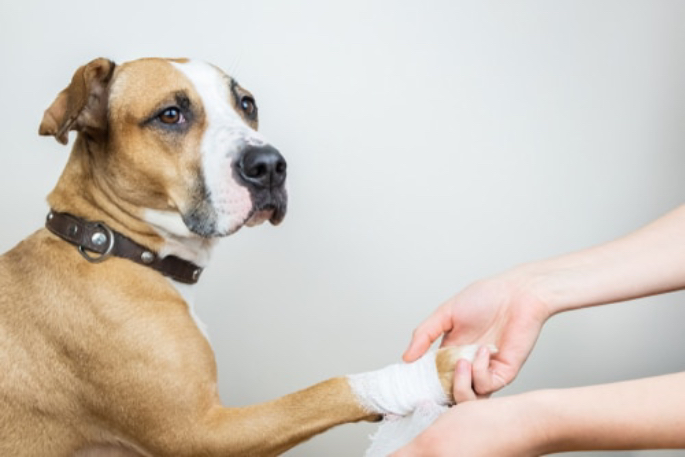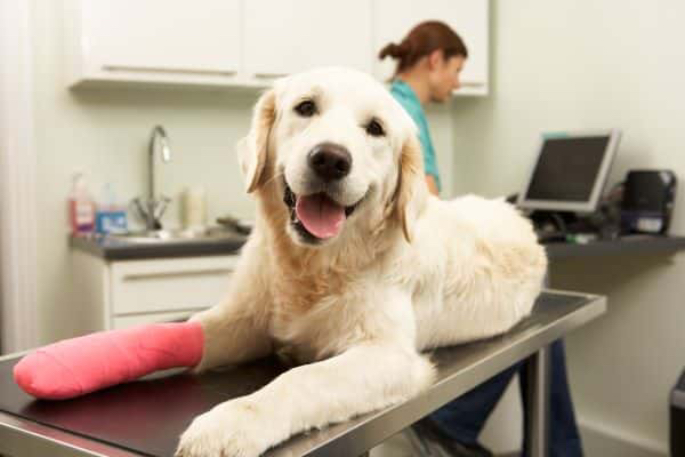Injured pet? Watch bandages and casts carefully to avoid secondary problems is advice being offered by pet experts.
Broken bones and injured limbs are, unfortunately, quite common in both dogs and cats.
While most pet parents are adept at noticing when their fur baby is in pain and getting the necessary attention from a vet, there’s one area where knowledge can be a bit lacking - aftercare.
Without careful attention, supporting casts and bandages can cause serious secondary injury – and could even threaten your pet’s life.
Having noticed a few claims coming through related to cast and bandage management (rather than the injuries themselves), pet insurance specialist PD Insurance is advising all pet parents to take extra care.
“We’ve seen quite a number of cats and dogs having to go back to the vet, sometimes with serious complications arising,” said PD Insurance COO Michelle Le Long.
“And one of the most common issues is the cast or bandage getting moist.”
It may seem trivial, but a wet cast or bandage is anything but. In some cases, the resulting bacterial infection can require amputation and could even lead to death.
Treatment and aftercare
When offered surgery to repair a broken bone or a cast, the cast can seem like the cheaper upfront option but requires significantly more aftercare and has much greater potential for unintended consequences, said Healthy Pets NZ veterinarian Dr Cath Watson.
“Extreme diligence is required from the pet parent to ensure successful management,” she said.

Typically, dogs and cats don’t slow down much in the face of injury. But as a careful pet parent, applying the brakes is your job: confining your pet will help them towards a faster successful recovery.
“Moisture is the biggest single cause of problems and can undo the good work done by your vet in setting the bone or suturing any cuts.”
Even apparently trivial sources of moisture such as a damp lawn, your pet’s water bowl, licking or urine, can interfere with recovery.
While the ‘cone of shame’ might be helpful in some cases, excessive licking can be a strong indicator there is something very wrong with the cast/bandage.
In this instance, Dr. Cath recommends getting it checked instead of relying on a cone.
Why?
“The moist, warm area, along with potentially broken skin, is a breeding ground for bacteria. Within a few days, your pet’s limb could get deeply infected, requiring another visit to the vet,” Dr Cath explains.
Solutions for soaked dressings
The cone of shame – otherwise known as an Elizabethan collar - is just one tool in the potential arsenal of solutions to see off soaked dressings.
Dr Cath recommends asking the vet for an old drip bag which is a good heavy-duty plastic that won’t easily get holes in it but do be careful: don’t leave an unbreathable cover on for any longer than 30 minutes,” she cautions. Also, avoid using electricians’ tape to hold it or the dressing in place. Self-adhesive bandage is a better option.
An old sock can also offer a protective cover. While that won’t stop moisture getting into the dressing, it will slow it down – and keeps out dirt as a bonus.
“Tracking the recovery is always a great idea,” says Dr. Cath. “You can do that by gently squeezing your pet’s toes. They should look at you and pull back a little.”
Not only does this allow you to monitor for dampness, swelling and bad smells, but you’re also checking for feeling in the toes. If there isn’t any response, squeeze a bit harder – and if nothing still, it may be time to check in with the vet.
Particularly in this case, prevention is always better than cure. If in any doubt, a new dressing might be necessary.
“Please remember, replacing a dressing can be fast and relatively inexpensive. It’s also far better than dealing with a serious infection or damaged tissue,” said Dr Cath.
Care in recovery leads to the best results
Le Long urges pet parents to keep a close eye on their fur babies if they have casts or bandages.
"A wet cast can lead to serious complications like amputations, and that's something no one wants to go through. Necrosis can develop quickly, even overnight, so it's really important to stay vigilant.
"While keeping a close watch is crucial, remember that every effort you make is a step towards your pet's recovery. With your attentiveness and dedication, your fur baby will soon be back to their playful self. Stay positive and keep up the great work,” she said.



0 comments
Leave a Comment
You must be logged in to make a comment.